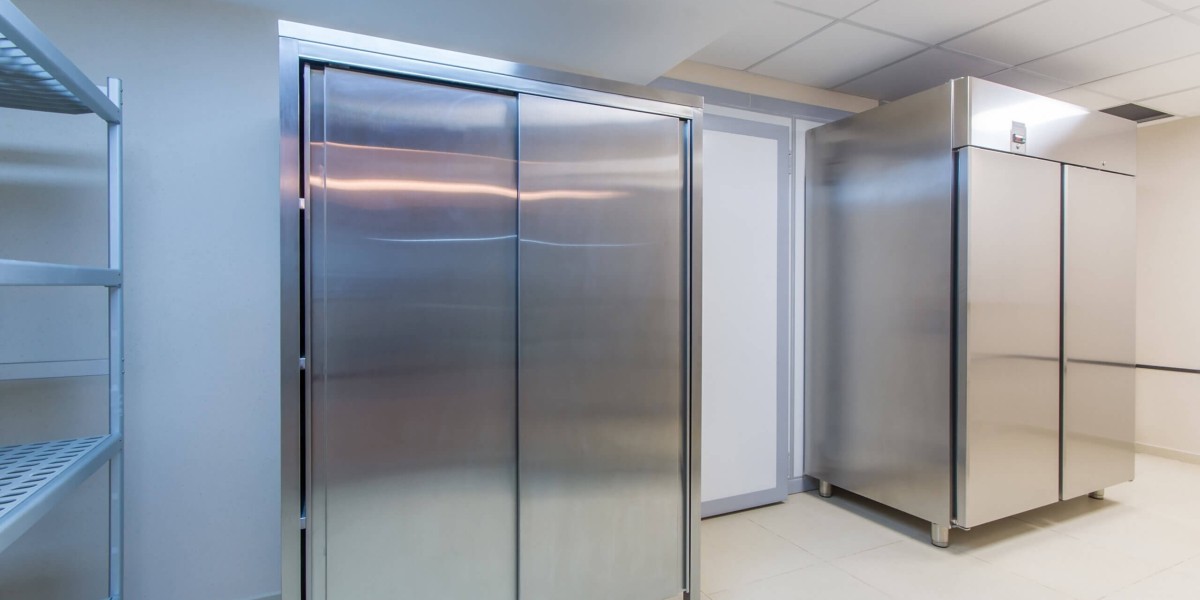In the fast-paced world of food service and hospitality, maintaining optimal food safety and quality relies heavily on effective refrigeration solutions. Commercial refrigeration is a critical component for restaurants, cafes, hotels, and other food-related businesses, providing the necessary environment to store perishable goods safely and efficiently. This guide delves into the various types of commercial refrigeration, their benefits, and tips for choosing and maintaining these vital systems.
What Is Commercial Refrigeration?
Commercial refrigeration refers to the range of cooling systems and equipment used in businesses to store and preserve perishable food items. These systems are designed to handle high volumes of goods, maintain precise temperatures, and ensure energy efficiency. Effective commercial refrigeration is crucial for maintaining food safety, reducing waste, and ensuring the quality of stored products.
Types of Commercial Refrigeration
Refrigerators
- Reach-In Refrigerators: These are upright units with hinged doors that provide easy access to stored items. They come in various sizes and configurations, including single, double, and triple-door models. Ideal for kitchens with limited space, reach-in refrigerators offer convenience and efficient storage.
- Undercounter Refrigerators: Compact and designed to fit under countertops, these refrigerators are perfect for small kitchens and bars. They provide quick access to frequently used items and help maximize kitchen space.
Freezers
- Upright Freezers: Similar to reach-in refrigerators but designed for freezing, upright freezers offer vertical storage with adjustable shelves. They are suitable for storing frozen foods and can be equipped with features like frost-free operation and temperature alarms.
- Chest Freezers: These units have a horizontal design and are ideal for bulk storage. They are energy-efficient and provide ample space for large quantities of frozen goods. Chest freezers are commonly used in grocery stores and commercial kitchens.
Walk-In Refrigerators and Freezers
- Walk-In Refrigerators: These large, room-sized units are designed for high-capacity storage and easy access to a wide range of perishable items. They are customizable to fit specific needs and can be equipped with shelving, lighting, and temperature controls.
- Walk-In Freezers: Similar to walk-in refrigerators but for freezing, walk-in freezers are essential for businesses with significant storage needs. They provide a controlled environment for long-term storage of frozen products.
Display Refrigerators and Freezers
- Glass Door Refrigerators: Often used in retail environments, these units have glass doors that allow customers to view products without opening the doors. They are ideal for displaying beverages, desserts, and other items while keeping them cool.
- Open Display Freezers: Common in grocery stores, these freezers provide easy access to frozen foods and are designed for high visibility. They come in various configurations, including island and vertical models.
Blast Chillers
- Blast Chillers: Used to rapidly cool down hot foods to safe temperatures, blast chillers are essential for maintaining food safety and preserving quality. They are commonly used in commercial kitchens to ensure that food is cooled quickly and evenly.
Benefits of Commercial Refrigeration
Food Safety and Quality
- Temperature Control: Commercial refrigeration systems are designed to maintain precise temperatures, which is crucial for preventing food spoilage and bacterial growth. Consistent temperature control helps ensure that food remains safe and of high quality.
- Extended Shelf Life: Proper refrigeration extends the shelf life of perishable items, reducing waste and allowing businesses to manage inventory more effectively.
Efficiency and Organization
- Space Optimization: Commercial refrigeration units are designed to maximize storage space and efficiency. They come with adjustable shelving, compartmentalized storage, and customizable configurations to suit various needs.
- Energy Efficiency: Modern commercial refrigeration systems are designed to be energy-efficient, reducing operating costs and minimizing environmental impact. Look for units with energy-saving features and certifications.
Compliance with Regulations
- Health and Safety Standards: Adhering to food safety regulations and health codes is essential for any food-related business. Commercial refrigeration helps meet these standards by providing a controlled environment for storing perishable goods.
Tips for Choosing and Maintaining Commercial Refrigeration
Assess Your Needs
- Storage Capacity: Determine the amount of storage space required based on your inventory and operational needs. Choose a refrigeration system that accommodates your volume and provides easy access to stored items.
- Type of Products: Consider the types of products you need to store, such as fresh produce, frozen foods, or beverages. Different types of refrigeration units are designed for specific products and storage requirements.
Energy Efficiency
- Energy Star Ratings: Look for commercial refrigeration units with Energy Star ratings to ensure they meet energy efficiency standards. Energy-efficient models help reduce operating costs and environmental impact.
- Regular Maintenance: Implement a regular maintenance schedule to keep your refrigeration systems running efficiently. This includes cleaning coils, checking seals, and inspecting temperature controls.
Features and Accessories
- Temperature Monitoring: Choose units with reliable temperature monitoring and alarm systems to ensure that any deviations from set temperatures are detected promptly.
- Customization: Consider refrigeration systems with customizable features, such as adjustable shelving, lighting, and door configurations, to fit your specific needs and layout.
Supplier and Warranty
- Reputable Suppliers: Purchase from reputable suppliers who offer quality products and reliable customer support. Building a relationship with a trusted supplier can help ensure timely service and support.
- Warranty and Support: Ensure that the refrigeration units come with a comprehensive warranty and access to technical support. A good warranty provides peace of mind and protection against potential issues.
Conclusion
Commercial refrigeration is a vital aspect of any food-related business, providing the necessary environment to store and preserve perishable goods. From refrigerators and freezers to walk-in units and display cases, each type of commercial refrigeration equipment plays a crucial role in maintaining food safety, efficiency, and quality. By carefully selecting and managing your refrigeration systems, you can enhance operational efficiency, reduce waste, and ensure a high standard of food safety. Staying informed about the latest advancements and best practices in commercial refrigeration will help you make the best choices for your business and ensure long-term success.







